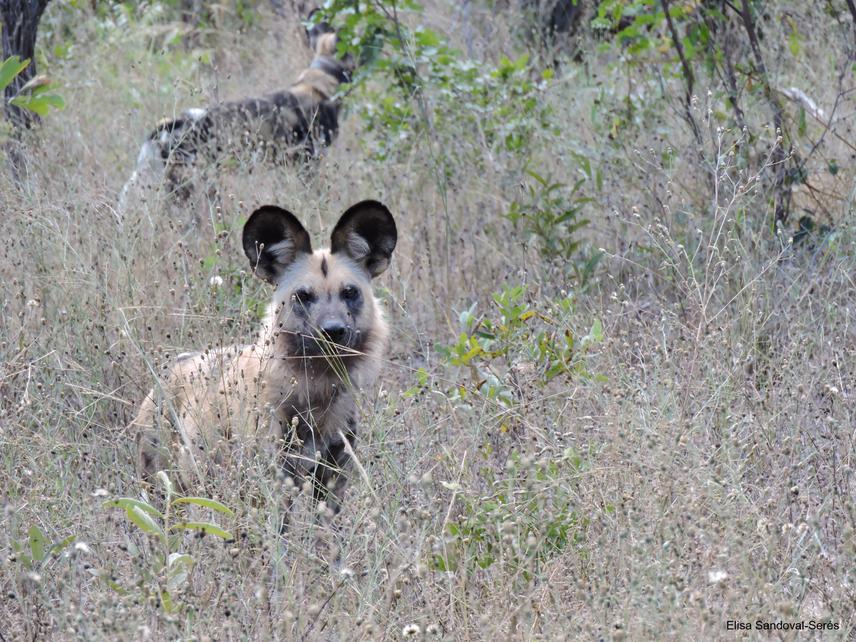María Elisa Sandoval Serés
Other projects
16 Jun 2022
Impact of Interspecific Competition on African Wild Dogs (Lycaon pictus) in an Ecosystem with Artificial Perennial Water Provision
Our aim is to determine how African wild dogs cope with the competition with larger carnivores (lions and spotted hyaenas) in an ecosystem with artificial water provisioning.
Taking seasonality (early dry / late dry, nomadic / denning) into account, we will assess the following:
1) To identify the level of competition, we will determine the seasonal diet preference of wild dogs, and the seasonal diet overlap of wild dogs with lions and spotted hyaenas.
2) During the denning season, we will determine how den site selection factors, babysitting time, and foraging distance influence predation risk and herewith pup recruitment and survival.
3) Assess whether wild dogs use reactive (after detecting an immediate threat) coping behaviour to avoid interspecific competition with lions and spotted hyenas.
4) Assess whether wild dogs use proactive (after a previous risk assessment) coping behaviour to avoid interspecific competition with lions and spotted hyenas.

© Elisa Sandoval Seres
Worldwide the African Wild Dog (Lycaon pictus, endangered species) population is in decline (IUCN 2020). One of the biggest natural threats to wild dogs is competition with larger dominant carnivores (interspecific competition) (Woodroffe and Sillero-Zubiri 2012). Such competition affects wild dogs through exclusion from prey rich areas, kleptoparasitism and mortality (Creel 2001; Van der Meer et al. 2011, 2013). Moreover, this competition can result in wild dogs moving outside protected areas into anthropogenic landscapes where they suffer from anthropogenic mortality (Van der Meer et al. 2013). In our study we aim to determine how African wild dogs cope with the competition with larger carnivores in a water limited ecosystem.
The study area will be in Hwange National Park (HNP), which is the largest protected area in Zimbabwe and part of the largest conservation area in the world (PPF 2018), where a stronghold wild dog population lives. HNP is a man managed area with no perennial natural water, as such the park relies on artificially pumped waterholes, the number of which depends on funding availability (Valeix et al. 2010). This influences the ecological dynamics of HNP, where waterholes are key areas because prey and predators aggregate around them, especially in the dry season (Chamaillé-Jammes et al. 2009; Valeix et al. 2010; Périquet 2014). We will use existing home range and movement data on wild dogs, lions and spotted hyaenas (from Painted Dog Conservation, Hwange Lion Project and CNRS-HERD), and monitor radio-collared wild dogs and their dens.
In man managed protected areas, water management, through prey and predator aggregation, is likely to influence the intensity of interspecific competition, which can have implications for subordinate species like wild dogs. Thus, this research will determine how the current water management situation in HNP affects interspecific competition and herewith the wild dog population. Ultimately, this project should result in water management recommendations aimed at reducing competition and increasing fitness of the endangered African wild dog. This will help Painted Dog Conservation (NGO) and ZIMPARKS (Zimbabwe Government) to create more favourable conditions for wild dogs within HNP.